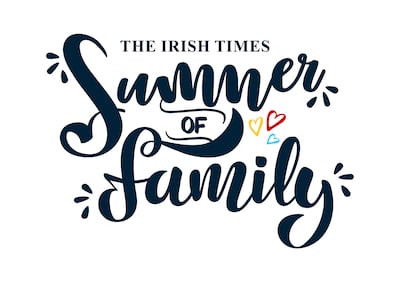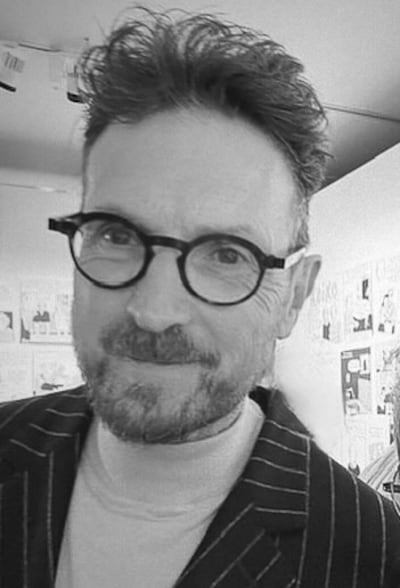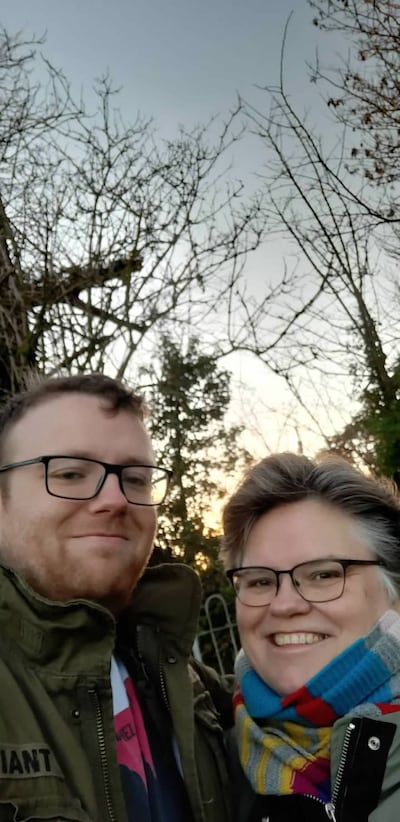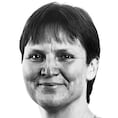When is a comic not a comic? It was a conundrum the Pregnancy Loss Research Group grappled with when they delved into graphic medicine to highlight experiences of bereaved parents.

A term associated with humour and superheroes did not seem appropriate for the subject matter, although the group recognised the potential power of the illustrative, storytelling format. The resulting 24-page booklet, Why My Baby Died, is described as “a graphic narrative” and it depicts how parents are generally not involved in maternity hospital reviews of perinatal deaths (ie ones during pregnancy or shortly after birth) and left struggling to find answers.
“We were talking about it as a comic because that is what graphic medicine is,” says Marita Hennessy, a researcher with the group at University College Cork. “But when you’re talking about bereavement like that, it just seems really wrong.”
“Graphic medicine” is where comics and healthcare meet. A Welsh doctor, Ian Williams, coined the term when he set up the graphicmedicine.org website in 2007, which defines it as “the intersection between the medium of comics and the dis of healthcare”.
“The ‘medicine’ bit of graphic medicine refers to the healing elixir you take on a spoon, rather than the profession of doctors – the idea that comics can have a therapeutic effect,” he tells The Irish Times ahead of the annual international graphic medicine conference (graphicmedicineconference.org) that will be held in Ireland for the first time in July.

Hennessy, along with the lead of the Pregnancy Loss Research Group, Prof Keelin O’Donoghue, will be presenting their work at the conference in Athlone, Co Westmeath. One year on from the launch of Why My Baby Died, the group are in no doubt that using what was a novel channel of communication for them has had more impact than a written paper would have. Seed grant funding from the Irish Hospice Foundation enabled them to work with illustrator Amy Lauren to create a publication aimed at attracting the attention of decision makers, such as those within the Health Service Executive and coroners.
“We recognise that we need to communicate in different ways to really engage the people that we want to engage,” says Hennessy. Why My Baby Died has not only been distributed to relevant policymakers, it has also been used in bereavement training within maternity services and Lauren’s original art work went on show at The Glucksman art museum in UCC. It can also be viewed online at ucc.ie.
Generally, the feedback has been really positive, although one bereaved parent told them they just didn’t get it at all. The comic format will only work “for certain audiences, for certain messages”, says Hennessy, but she is sure they will use it again. It provides another layer of understanding to difficult topics – and there is plenty of those in their field of work. She and O’Donoghue are looking forward to hearing the views of experienced practitioners of graphic medicine at the conference and discussing “knotty problems” of using the medium – such as what to call it.
Difficulty with the term “comic” is tied to stigma, says one of the pioneers in graphic medicine, MK Czerwiec, a nurse, cartoonist and educator in Chicago. “The word ‘comics’ is often perceived by the unfamiliar to be limited to humour, juvenilia or superheroes. Though all of those things may be a part of comics, they don’t define it,” she tells The Irish Times, ahead of her attendance at the conference. Rather, comics is a medium and, like any other artform, can contain multitudes.

She started to discover the power of this medium for herself between gruelling shifts as a nurse in an HIV/Aids clinic in the 1990s. Desperate to deal with grief over a patient’s death the night before, she scribbled a picture of herself, wrote “I feel miserable” and put a box around it. Drawing another box beside it, she thought about the work of cartoonist Lynda Barry, whose comic strips often featured serious topics, and soon had nine panels completed.
As she explained previously on a US podcast, The Clinic & The Person: “Through the course of it I found myself in a place of hope and I thought ‘wow, that worked’. There was something about the nature of a comic, which is sequential combinations of image and text, that in the doing of it had this incredibly helpful effect on me.”
[ Real Roy of the Rovers stuff: The rise and shocking demise of a comic-book heroOpens in new window ]
However, Czerwiec was never the kid who could draw well at school and wasn’t encouraged to learn. “Quite the opposite, I was told to put my crayons away and use my words.” So, “because I wasn’t ‘good’ at drawing, I didn’t think it was more than just an odd but effective way for me to continue caring for my patients by caring for myself.”
Eventually, “I wanted to make better comics by informing them with theory about how stories can help us heal.” After enrolling in a graduate programme in medical humanities and bioethics, she came across a book that changed her whole way of thinking, Mom’s Cancer by Brian Fies. It made her realise that comic panels “when made by someone experiencing health issues, caregiving and disability, can become windows into lived experiences that could powerfully educate health professionals and the wider world”.
Her search for similar works led her to Williams’s graphic medicine website and then to meeting him and like-minded others in London.
“Setting up the website changed my life. No exaggeration,” says Williams. “People started contacting me from all over the world saying they were interested in comics and healthcare, too, or teaching it, or making comics about illness or disability. I headed the organisation of the first graphic medicine conference in London in 2010 and we’ve kept going since.”
Williams, unlike Czerwiec, was considered “good at art” in school. After qualifying as a GP, he worked part-time so he could attend art school to study painting and printmaking, from which he developed a side career. In an attempt to find a link between his medical and artistic endeavours, he embarked on a master’s in medical humanities and started reading many graphic novels. He too found Fies’s book, which inspired him to look for other comics with healthcare narratives and not only write about the phenomenon for his dissertation but also set up the website.
Around that time he started making comics about his experiences as a doctor. His first graphic novel, The Bad Doctor, led to two years of writing a weekly comic strip, Sick Notes, for the Guardian newspaper.
“I am interested in issues that are not talked about, like the potential of healthcare to do harm, bad behaviour amongst healthcare staff etc. But I also try to make it funny or at least ironic.” He describes his work as “semi-autobiographical”.
“The Bad Doctor was about having a mental health problem – crippling OCD in my case – while training as a doctor. My third book, which will be out next year, is about the experience of having cancer treatment while working as a doctor, and the psychological fallout involved. It is called The Sick Doctor.”

He says he has learned a lot from reading autobiographical graphic novels made by other cartoonists who have suffered ill-health, trauma or disability. “They are full of information that one would never find in a textbook – what it is like to experience and live with a disease. I think that they can also influence the way that the illness is perceived by the general public, or even how others experience it themselves, by finding new ways to represent the illness visually and creating their own ‘iconography of illness’ as [US historian] Sander Gilman calls it.”
For Jane Burns, the chair of the organising committee for next month’s conference, it was her own cancer diagnosis nearly a decade ago that led her to graphic medicine, also through Fies’s book. Her adult son, Peter, was struggling with the news of her illness and a colleague recommended Mom’s Cancer.
Burns, a librarian, had always encouraged her twin children to read stories. Comics and graphic novels had developed into a strong shared interest between her and Peter. Although she had uterine cancer and the woman in Fies’s book has advanced brain cancer, “so it was completely different”, the work provided vocabulary and a narrative through which mother and son could connect and share concerns. She particularly appreciates how comic treatment of such a topic can show that when people are saying one thing to their doctor, they are thinking something else and, vice versa, when the doctor is telling you something, they too are thinking something else.
“We could talk about the book, but not talk about us,” says Burns. During her recovery, both she and Peter searched for more graphic novels relating to health and wellbeing and he came across The Graphic Medicine Manifesto, a collaborative work by six pioneers in the field, including Williams and Czerwiec. He bought two copies, which they read and discussed together. It motivated her to refocus plans for doing a PhD in medical humanities and archives to one on graphic medicine and its role in education.
[ Infant mortality down almost 60% as number of cot deaths reduceOpens in new window ]
She and Peter attended their first conference on graphic medicine together in 2017. Seven years later, Burns is leading the hosting of the graphic medicine conference at the Technological University of the Shannon (TUS), where she is director of public education and engagement in the faculty of engineering and informatics. Five of the six co-authors of the manifesto that so inspired Jane and her son will be there.
Tragically, 2½ years ago, Peter drowned at the age of 29, in Aarhus, Denmark, where he was working as a chef. He has been commemorated by his famiily, supported by friends and colleagues, with the setting up of a scholarship fund for attendance at the graphic medicine conference. It started with last year’s event in Toronto and three scholarships have been awarded for the Athlone conference.
Burns explains how an approach by Fáilte Ireland, which was looking to bring interesting and bespoke conferences to different parts of the country and had noticed her social media posting on graphic medicine, started the ball rolling on the hosting. She took the idea to the dean of engineering in TUS, Dr Seán Lyons, who was fully supportive. She also pays tribute to librarian colleague Niamh O’Brien, chair of the volunteers’ committee, who worked on digitising a graphic medicine exhibit displayed at the 2019 dotMD conference in Galway, so it could get a much wider audience online and is a very helpful introduction to the field.
The conference theme is draíocht, the Irish for “magic”. Burns, an American who has been living in Ireland for 35 years, sees it as apt not only for the way that comics spark imagination and creativity, but also for introducing people to the “magical midlands”. Keynote speakers include Nick Sousanis, an Eisner-winning comics author and an associate professor in liberal studies at San Francisco State University; and Zara Slattery, author of the award-winning graphic memoir, Coma. (Registration for the Graphic Medicine Conference, on July 16th-18th, closes on July 1st. See graphicmedicineconference.com).

Williams, who will be leading a pre-conference workshop for healthcare professionals, believes that making a comic can be a magic act. “One is creating a work of art in which the drawings and the text combine to become something more than the sum of the parts. Something that takes on a life of its own and can change people’s lives.”
[ ‘Barely a page that doesn’t scintillate’: The best graphic novels of 2023Opens in new window ]
Czerwiec sees comics as highly efficient tools for learning. “When it comes to our bodies and what can go awry with them, we often need to learn a lot very quickly to make informed, consequential decisions for ourselves and our loved ones. Comics make that easier.” By juxtaposing image and text in creative ways, comics can find a way in to difficult topics better than words or images alone.
“This, in addition to a long history of being used for humour and truth telling, helps comics create a comfort level in the reader that might allow more challenging topics a safe place to land,” adds Czerwiec. “This is certainly why I edited an anthology of comics on menopause.”
- Sign up for push alerts and have the best news, analysis and comment delivered directly to your phone
- Join The Irish Times on WhatsApp and stay up to date
- Listen to our Inside Politics podcast for the best political chat and analysis

















